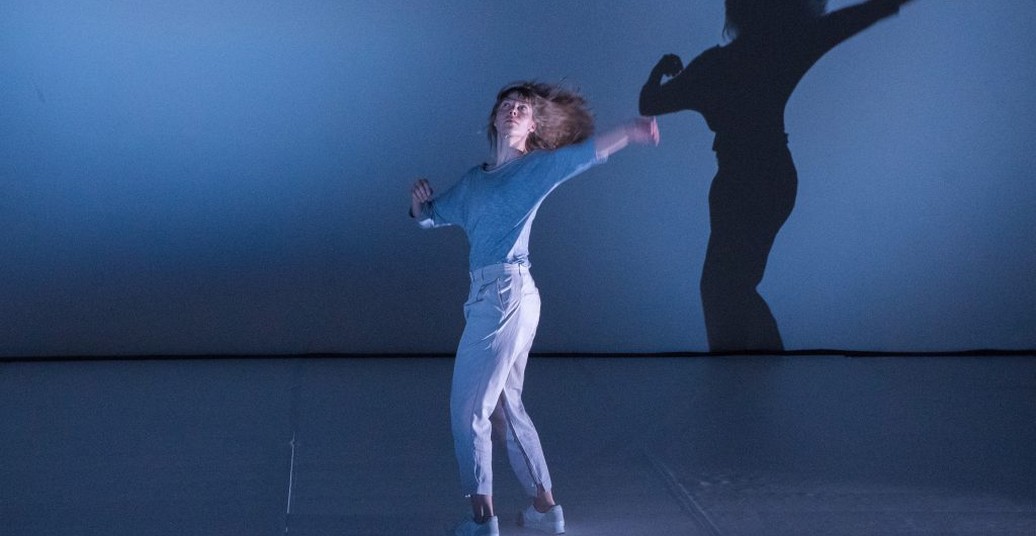Choreographer Milla Koistinen, lighting designer Ladislav Zajac, and composer Paul Valikoski create a subtle and powerful response to the paintings of Canadian abstractionist Agnes Martin in “On a Clear Day” at Berlin’s Uferstudios.
Sometimes the mind unlatches. It’s almost like the removal of a helmet, or an unclasping of metal from around a periphery, and the thoughts, buoyed by this release, do not flutter and rap into further flurry, but expand and seep outward. Time swims. And as time swims the focus is allowed to do different things and go different places, but, most of all, to not keep track of itself. Inward and outward, fine and large, it goes its own way.
This type of feeling can be elicited in many situations: falling into bed at night, looking up at a big prairie sky, or regarding the organic precision of art, such as occurs in the paintings of Agnes Martin. Her pale, expansive canvasses play with repetition and geometry while bringing forth texture, materiality, and inconsistency.
Milla Koistinen, Ladislav Zajac, and Paul Valikoski take Martin’s work and its abstract yet ephemeral qualities as a starting point for “On a Clear Day”, creating a space and time frame which plays with both the painter’s work, and with the translation of art from one medium into another more broadly.
When we watched Koistinen twist and twist and twist and twist again again, this is what happened. The elbow made the arc, the torso swung, the shadow of an unstoppable memory from childhood sprung forth. With legs planted in starched white trousers, it is almost a Charles Comfort painting come alive, a smooth scoop of person against the sea. But that is only in image, fleeting. Everything is gradient, and in the way that paint can so impossibly go from solidity to transparency across a canvas, so too does her transformation from standing to the floor happen with no fixed point of change.
The projectors, designed by Zajac and launching at the figure from three sides, snap closed and open as their gels switch purple, blue, dim green. As they take turns outlining where her shadow falls, we get a new perspective. Sometimes it feels far away, at other times as if she is a lone birch on the flattest of plains, yet at other times emerging as the gentle, looming image of stone-skipper on the beach at dusk. Nothing has priority, and nothing shocks. Like the peeling of a skin, each time something fresh, each time something new, but each revelation always shows something that has always been there. The slow click and beat of the sound, drawn from the projector’s own motion and brought together by Valikoski, is similarly organic. Its consistency is immensely hypnotic while the snap of the shutter frames a temporal periphery. We watch and listen, in and out of time, together.
Interdisciplinary and transdisciplinary creation happens all the time, but “On a Clear Day” is the rare example wherein each factor does not just provoke or influence the next, but takes on an additional quality without losing its own. In this work, not only do choreographer, composer, and lighting designer work together to create something whole, but the end result really does speak to Martin’s paintings: their colour, their tone, their ambiguous philosophical stance, their precision and understanding, their geometry, their humanism, and, essentially, the combination of things which are together but are often set apart. It is the first time I have seen a painting stand up. And as the cool breezes of this landscape fly past my cheeks, I am somewhere new.




